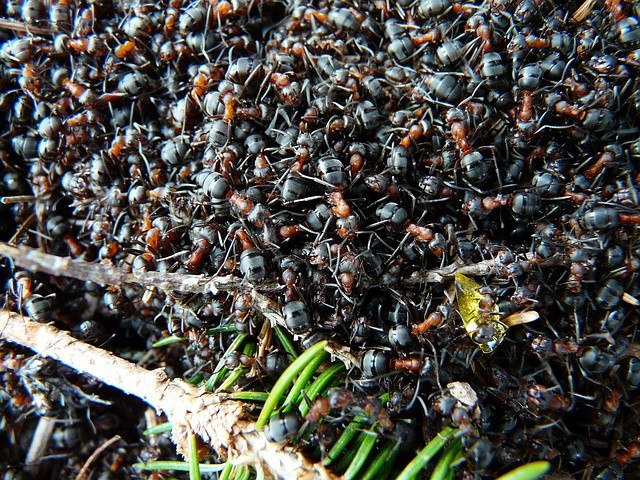
Research concerning ant colonies has concluded that they resemble a living neural network that moves and functions as one consciousness. This was an eerie idea that this group of insects is so synched that all stimuli in their environment act as a single collective.
Ants Act as a Unified Group
The study's authors examined how these colonies might respond to rising temperatures in the nests they call home. They figured out what triggered the insects' decision to depart the nest as a single, cohesive group, reported Sciencealert.
One analogy for each member's unique activities was separate neurons in a single brain cooperating to generate a thought or action. It is the pinnacle of employment benefits while preventing the needless death of its members.
Daniel Kronauer, one of the study's authors and a member of the Laboratory of Social Evolution and Behavior at New York Rockefeller University, said the following: The method utilized to examine the collective insects was designed to resemble a cognitive system that decides group actions like a neutral network as behavioral outputs.
It begins to understand this colony of insects moving as one consciousness. The experimental setup comprised a tracking camera, temperature-controlled ant colonies, and ants with dot-marked bodies.
When the temperature reached about 34 degrees Celsius or 93 degrees Fahrenheit, The nest was abandoned by the colony consisting of 36 worker ants and 18 larvae, according to the researchers, noted Phys. Org.
Read Also : DeepSqueak AI Revolutionizes the Study of Marine Animals Calls in the World's Oceans of Sounds
The temperature rose as the colony's population increased, forcing the ants to abandon their nest. The 200 ants wanted to stay, but when the temperature reached 97 degrees Fahrenheit, the colony left.
According to this theory, the ants' excitatory and inhibitory elements are expected to compete with one another, much like in a brain network.
Scientists used mathematical modeling to demonstrate how the ants' collective sensory response threshold was dependent on the equilibrium between these two parameters, not just the average of each ant's individual tastes. The threshold, he continues, is flexible and is determined by the colony's membership.
Factors Affecting Ants' Decision
In the investigation, issues such as why the quantity of ants in the collection has a significant impact and why these insects are sensitive to temperatures that control behavior like a living nerve system came up.
The researchers are baffled because there is no indication that the colony's members are aware of its size.
A conclusion that came from the study is that there is an influence of pheromones or chemical signals that are passed on to all colony members.
This increases the message to mobilize all ants in the nest, or there's the notion that it will be more difficult for a bigger group to respond quicker than a small colony. Size could then be the key to effectively managing the collective's benefits and costs.
The study does provide a reliable, quantifiable foundation for studying ants as a whole. More parameters could be introduced and subsequently adjusted in future studies to better understand this group's decision-making.
Kronauer remarked the system is understood more, and the result is determined with more precision. In time the process could be reverse engineered. In the study, ant colonies are akin to a living neural network that moves as one consciousness via pheromones.
Related Article: New Study Reveals Convergent Evolution Misleading, Says Evolutionary Tree Needs Revising
© 2026 HNGN, All rights reserved. Do not reproduce without permission.








